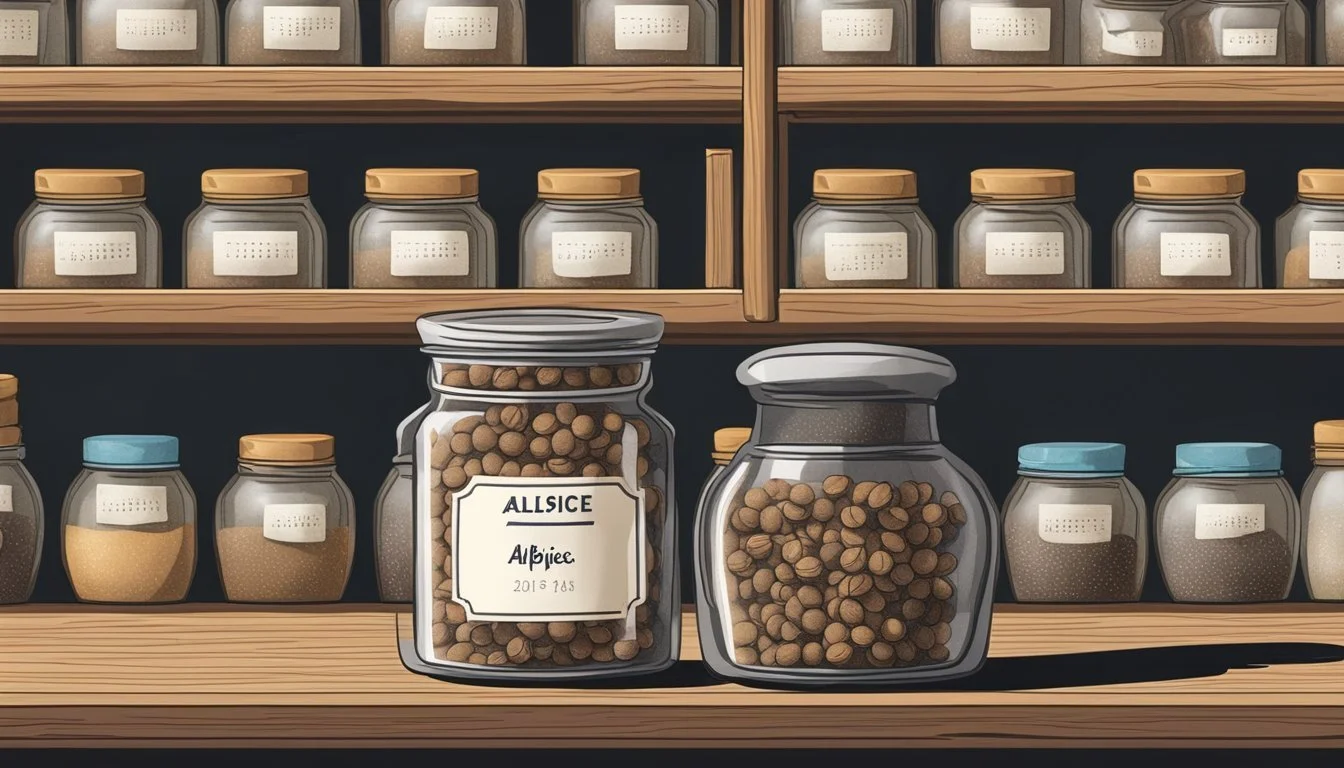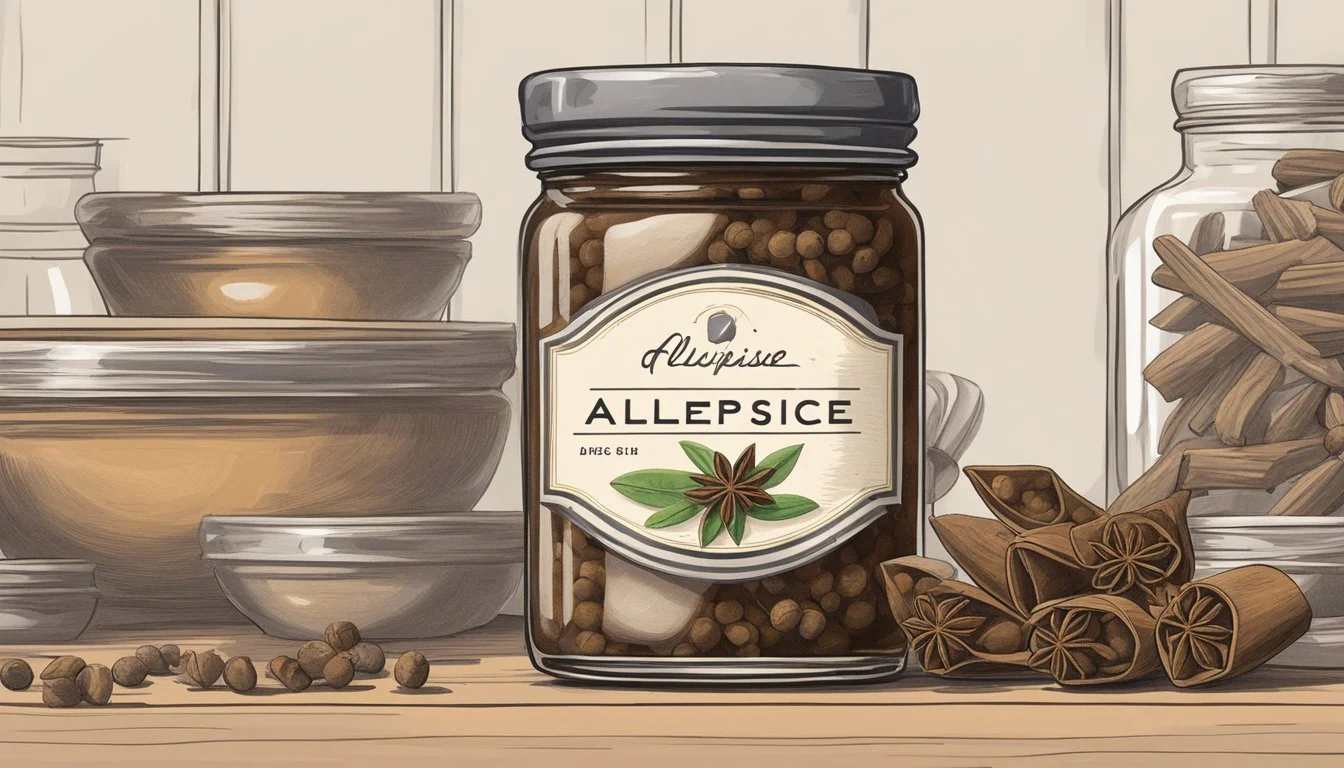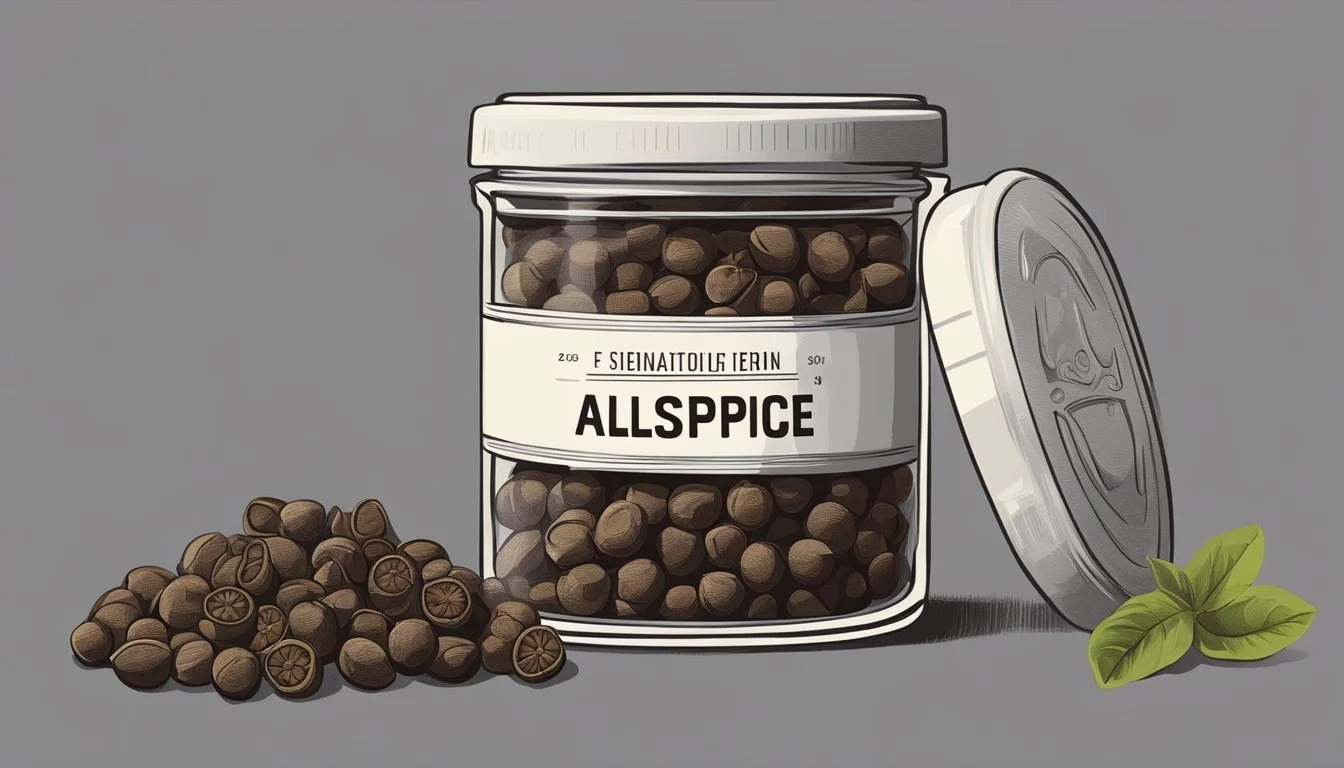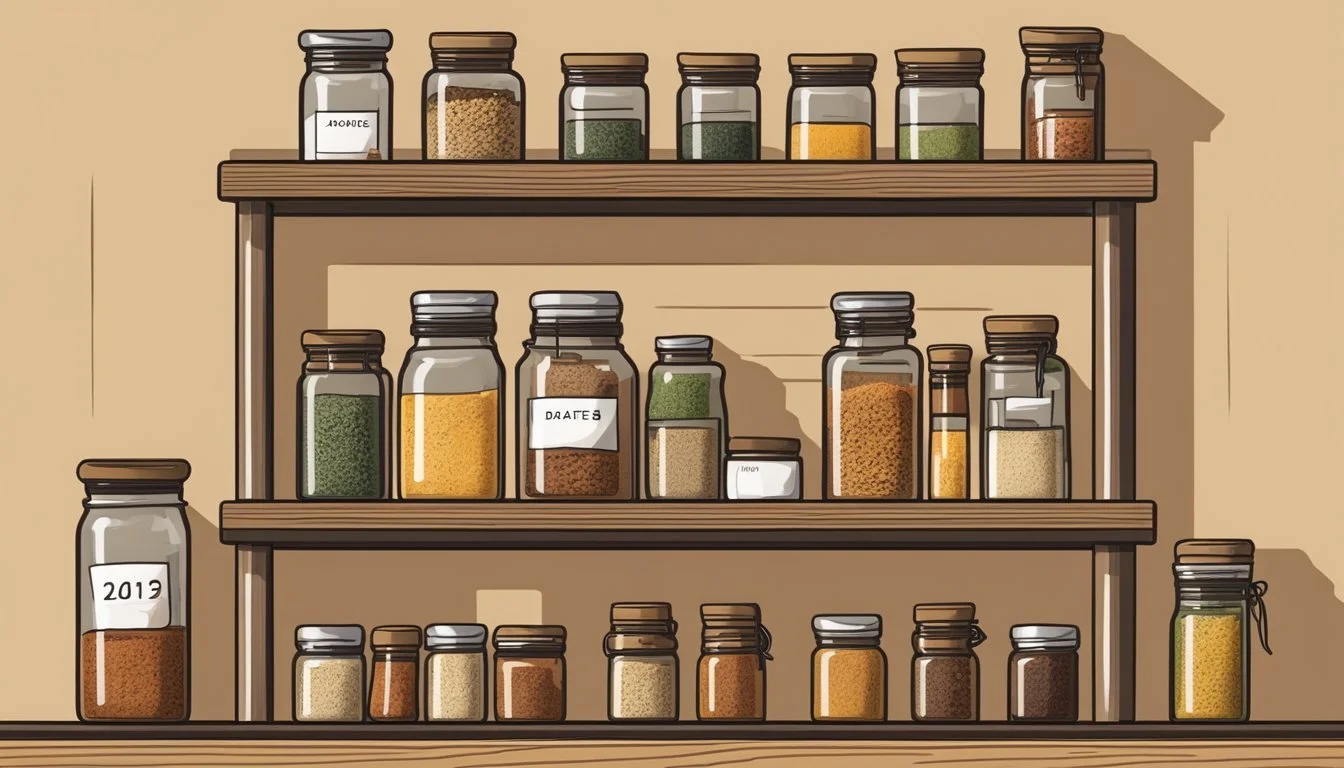Does Allspice Go Bad? Understanding Its Shelf Life and Storage
Allspice is a versatile and cherished spice often found in many kitchens, but like all spices, it doesn't last forever. Over time, allspice can lose its aroma and flavor, diminishing the vibrant taste it adds to dishes. Properly stored, allspice can retain its quality for several years, making it a reliable staple for your spice rack.
Spices, whether ground or whole, have varying shelf lives. Whole spices like allspice tend to last longer, often retaining their potency for up to four years. Ground spices, in contrast, generally have a shorter span of peak freshness, typically around one to two years.
The key to maintaining the quality of allspice lies in how it's stored. Keeping it in an airtight container, away from light, heat, and moisture, will extend its shelf life and preserve its essential oils. This way, you can enjoy the full, rich flavor of allspice in your culinary creations for as long as possible.
Understanding Allspice
Allspice is a unique and versatile spice that combines flavors of cinnamon, nutmeg, and clove, enhancing both savory and sweet dishes. It is important to grasp its origin and how it compares to other spices for effective use in cooking.
Origin and Culinary Uses
Allspice originates from the dried berries of the Pimenta dioica tree, native to the Caribbean and Central America. The name "allspice" reflects its complex flavor profile, reminiscent of cinnamon, nutmeg, and clove.
Chefs use it in a variety of dishes, including Caribbean jerk seasoning, pickling liquids, and spice blends. Its versatility extends to baked goods like cookies and cakes, as well as savory applications such as rubs for meats and stews.
Comparison With Other Spices
Allspice is often compared to cinnamon, nutmeg, and cloves due to its similar flavors. Unlike these spices, allspice combines their tastes into one, providing convenience and depth to recipes.
While cinnamon offers warmth, nutmeg presents a sweet, nutty flavor, and cloves introduce a sharp, aromatic punch. Allspice's peppercorn-like appearance and mildly spicy undertones distinguish it from these individual spices.
In cooking, allspice can mimic some aspects of black pepper and cayenne by adding complexity without overwhelming heat. Its unique profile makes it a versatile staple that complements both sweet and savory dishes.
Factors Affecting Allspice Shelf Life
The shelf life of allspice depends significantly on how it is stored and whether it is in whole or ground form. Proper storage can extend its use, while improper conditions can lead to a rapid loss of potency.
Impact of Storage Conditions
Storage plays a crucial role in preserving the freshness of allspice. Exposure to air, heat, light, and moisture can degrade its quality. Allspice should be kept in a cool, dry environment away from direct sunlight.
Using airtight containers can protect allspice from air and moisture, which are detrimental to its shelf life. A pantry or drawer is ideal for storage.
For those seeking to further extend allspice’s shelf life, freezing is an option. Ensure the container is completely sealed to prevent moisture buildup.
Whole vs Ground Allspice Longevity
Whole and ground allspice have different shelf lives. Whole allspice berries can last much longer, retaining their aroma and flavor for up to five years if stored properly. This longevity makes them a preferable option for those who do not use allspice frequently.
In contrast, ground allspice tends to lose its potency faster. It typically remains fresh for six months to two years. The increased surface area of ground allspice makes it more vulnerable to degradation from air and light.
Refrigeration is generally not recommended for spices, including allspice, as the fluctuating temperatures can introduce moisture, which compromises quality. Hence, a dark, dry place remains the best storage solution.
Proper Storage Techniques
To maintain the flavor and potency of allspice, proper storage is essential. Key principles include protecting the spice from moisture, light, and air, and understanding common mistakes to avoid.
Best Practices for Extending Shelf Life
Storing allspice in an airtight container is crucial. Glass or metal containers work best as they keep moisture and air out, preserving the spice’s freshness. Keep the container in a cool, dry place like a pantry or cupboard, away from direct sunlight.
Label the container with the best-by date to track its age. For long-term storage, consider freezing whole allspice in airtight containers. When ready to use, take out small amounts to retain the bulk’s freshness. Refrigeration is generally less suitable due to potential moisture issues.
Common Storage Mistakes to Avoid
Avoid storing allspice near sources of heat, such as stoves or ovens, as heat accelerates the degradation of aroma and flavor. Keeping the spice in unsealed bags or original cardboard packaging can lead to loss of potency.
Do not store allspice in high humidity locations like above the sink, as moisture can cause clumping and mold growth. Using clear plastic containers can also be problematic because they allow light to penetrate, reducing the shelf life. Always opt for dark, opaque containers instead.
Identifying Signs of Spoilage
Allspice, like many other spices, can lose its potency and become spoiled. Significant indicators of spoilage include changes in aroma, taste, and appearance.
Changes in Aroma and Flavor Potency
A critical sign of allspice spoilage is a noticeable reduction in its aroma and flavor potency. Fresh allspice should emit a strong, warm, and sweet scent reminiscent of cloves, cinnamon, and nutmeg.
If the aroma becomes weak or musty, it suggests the spice is no longer fit for use.
Similarly, the flavor should be robust and intense. When the taste starts to fade or becomes bland, it's a sign that the spice has lost its flavor potency. Tasting a small amount can help determine whether the allspice retains its intended flavor.
Visual Indicators of Spoiled Allspice
Visual inspection is also an effective way to identify spoiled allspice. Whole allspice berries should appear plump and dark brown. If the berries become shriveled or change to a grayish color, this indicates that they are no longer suitable.
Another important visual cue is the presence of mold. Check both whole and ground allspice for any mold growth, which appears as white or greenish patches on the surface. If mold is visible, the allspice should be discarded immediately to avoid potential health risks. Regularly checking these visual indicators can help ensure the spices remain fresh and effective for cooking.
Using Allspice in Cooking
Allspice is a versatile spice that enhances both sweet and savory dishes. Incorporating it into your cooking can elevate flavors and add a unique warmth to a variety of recipes.
Recipes and Seasoning Tips
Allspice can be used in a diverse range of recipes.
In baking, it complements pumpkin pie, apple desserts, and gingerbread. Blended with other spices like cinnamon, nutmeg, and clove, it enhances the aromatic quality of these treats. Savory dishes, such as Jamaican jerk chicken, Swedish meatballs, and stews, benefit from the depth and warmth allspice provides.
For seasoning meats, ground allspice can be combined with black pepper, paprika, or chili powder and used as a rub. It can also be added to marinades to infuse meats with flavor. Additionally, whole allspice berries are perfect for pickling liquids and broths.
Alternative Spices and Substitutes
When allspice is unavailable, certain spices can act as substitutes.
A blend of cinnamon, clove, and nutmeg can mimic its flavor profile. Cumin and black pepper might also be used in savory dishes to provide a similar warmth and depth, though the taste won't be identical.
Herbs such as oregano, basil, and thyme can contribute different yet complementary flavors to recipes that call for allspice. Bay leaves, rosemary, and sage can be added to soups and stews to provide a robust aroma and flavor when allspice is not an option.
Using the right substitutes ensures that your dishes maintain their intended character while accommodating dietary preferences or spice availability.
Health and Nutritional Information
Allspice, similar to nutmeg and cinnamon, offers various nutrients and potential health benefits, but users should also be aware of potential precautions.
Potential Benefits
Allspice contains various compounds like eugenol, quercetin, and gallic acid that offer antioxidant and anti-inflammatory properties.
The spice is often used to alleviate headaches, muscle cramps, and tooth pain due to its analgesic effects.
Additionally, allspice may have roles in slowing the growth of certain cancer cells, thanks to its rich nutrient profile.
Precautions
While allspice is generally safe in moderation, excessive consumption can lead to gastrointestinal issues.
Interactions with certain medications are possible, making it important for individuals with specific health conditions to consult healthcare providers.
Proper storage is critical for maintaining quality, especially when ground form degrades faster than whole.
Nutrient Amount per Teaspoon Calories 5 Vitamin C 39.2 mg Calcium 661 mg
The Lifespan of Common Spices
The lifespan of spices varies significantly depending on their form and storage methods. Fresh herbs generally have the shortest shelf life, while whole spices last the longest. Spices also lose potency over time, which affects their flavor and aroma.
Comparison of Shelf Lives
Ground spices, such as garlic powder, ground cinnamon, and chili powder, usually have a shelf life of about 2-3 years. These spices tend to deteriorate faster than their whole counterparts due to increased surface area exposed to air.
Whole spices, like allspice berries and peppercorns, can last much longer, typically maintaining quality for up to 3-4 years. Proper storage in airtight containers, away from light and heat, helps extend their lifespan.
Leafy herbs, such as parsley, oregano, and dill, have a lifespan of 1-3 years when dried. Fresh versions should be used within a week for best flavor. Seeds, like cumin and coriander, also have a relatively long shelf life, often retaining their potency for up to four years.









